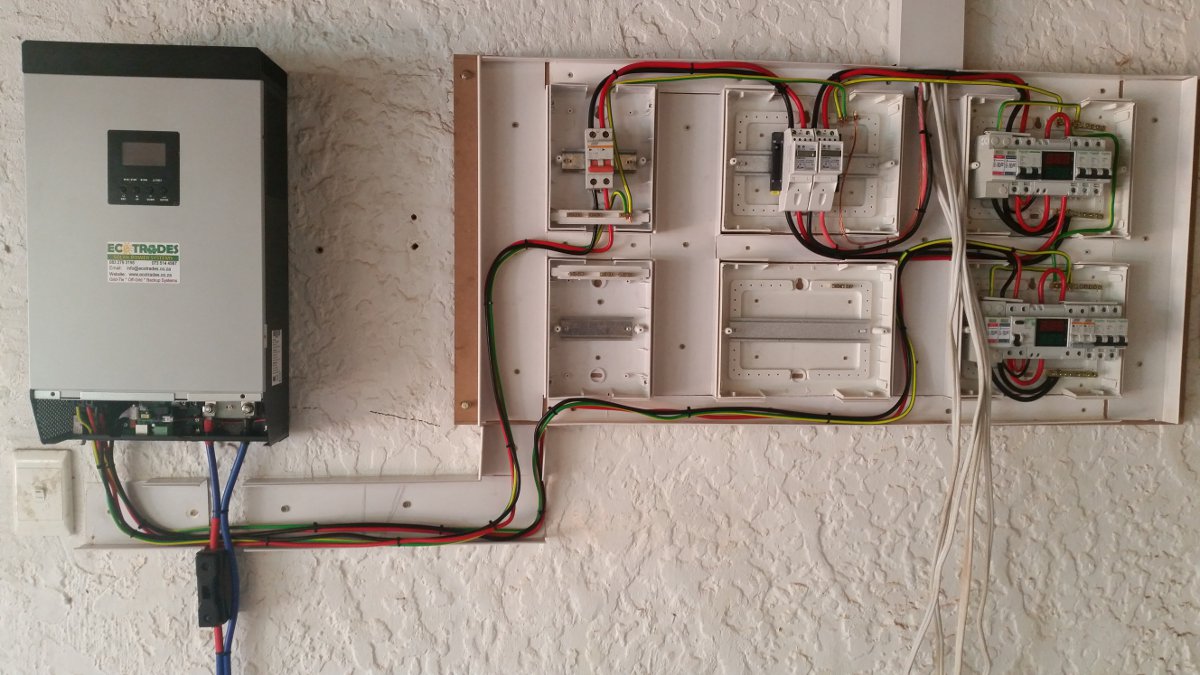A Solar Inverter and Its Types are commonly use devices. These device converts the DC electricity generate by solar panels into AC electricity that can use to power homes and businesses. Moreover, solar panels induce DC electricity when they’re expose to sunlight. But utmost appliances and bias in homes and businesses require AC electricity to operate. That is where solar inverters come in- they convert the DC electricity into AC electricity that can use to power homes and businesses.
Solar inverters are an essential element of a solar power system. As they ensure that the energy generate by solar panels can be use effectively. Without an inverter, the DC electricity generated by the solar panels would be unworkable for utmost operations. In addition to converting the DC electricity to AC electricity. Solar inverters also regulate the voltage and frequency of the electricity to insure that it’s safe and stable.
The basics:
Simply put, a Solar Inverter and Its Types converts direct current( DC) electricity into alternating current( AC) electricity. This is important as solar panels induce DC electricity, but regular homes, businesses and appliances bear AC electricity to run. So without the inverter, you ’re basically creating an cornucopia of solar energy that you can store( if you have a solar battery), but can’t actually use. For this reason, the solar inverter is frequently consider the ‘ gateway ’ of a solar system.
Types of solar inverters:
Hybrid Inverters:
Hybrid inverters are a type of solar inverter that allow for the integration of solar panels, battery storage, and grid power into a single system. They are design to be able to switch between using solar power, battery power, and grid power depending on the availability and demand for electricity. Hybrid inverters are becoming increasingly popular as more people seek to take control of their energy use and become more self-sufficient. By integrating solar panels and battery storage into a single system. Hybrid inverters allow for the optimization of energy usage, reducing reliance on the grid and lowering electricity bills.
OffGrid Inverters:
Off-grid inverters are a type of solar inverter that are use in off-grid solar power systems. Which are not connect to the main electricity grid. This solar power systems are typically use in remote areas where grid power is not available or in situations. Where it is not feasible or economical to connect to the grid. Off-grid inverters are design to work with battery storage systems to convert the DC electricity generate by solar panels into AC electricity. That can be use to power homes and businesses. They are typically more robust than traditional grid-tied inverters. As they need to be able to handle the fluctuations in voltage and frequency that can occur in off-grid systems.
OnGrid Inverters:
On-grid inverters are a type of solar inverter that are use in grid-tied solar power systems, which are connect to the main electricity grid. This solar power systems generate electricity from solar panels and feed excess electricity back into the grid, often earning credits or payments from the utility company. Moreover, On-grid inverters are design to convert the DC electricity generate by solar panels into AC electricity. That can use to power homes and businesses and to feed excess electricity back into the grid. They are typically smaller and less expensive than off-grid inverters, as they do not need to store energy in batteries.
String inverters:
String inverters are the most common type of solar inverter. They are typically install on the side of a building or in a garage and are connect to multiple solar panels in a series. In addition, the downside of string inverters is that if one panel is shaded or not working, the entire system will be affected.
Microinverters:
Microinverters are a newer type of solar inverter that are install on each individual solar panel. This means that each panel operates independently and if one panel is shade or not working. The rest of the system will not be affected. Microinverters can be more expensive than string inverters, but they offer better efficiency and reliability.
Power optimizers:
Power optimizers are similar to microinverters in that they are installed on each individual solar panel. However, they work differently – instead of converting the DC electricity to AC electricity on the panel, they optimize the power output of each panel and send it to a central inverter to convert to AC electricity.
Battery-based inverters:
Battery-based inverters are used in solar power systems that include battery storage. They work by converting the DC electricity from the solar panels into AC electricity that can be used to power homes and businesses and also charge the batteries.
How do Solar Inverter and Its Types work?
When sunlight hits the solar panels, they generate DC electricity. However, most appliances and devices in homes and businesses run on AC electricity. This is where solar inverters come in. They convert the DC electricity into AC electricity, so it can use to power homes and businesses.
In addition, solar inverters work by using a series of electronic components to convert the DC electricity into AC electricity. The inverter includes a microprocessor that monitors the power output of the solar panels and adjusts the voltage and current to ensure that the output is optimal.
Conclusion:
Solar inverters are an essential component of a solar power system. As they convert the DC electricity generated by solar panels into AC electricity. That can use to power homes and businesses. Moreover, there are several types of solar inverters available on the market, each with its own advantages and disadvantages. It’s important to choose the right type of inverter for your solar power system to ensure that it operates efficiently and reliably.


